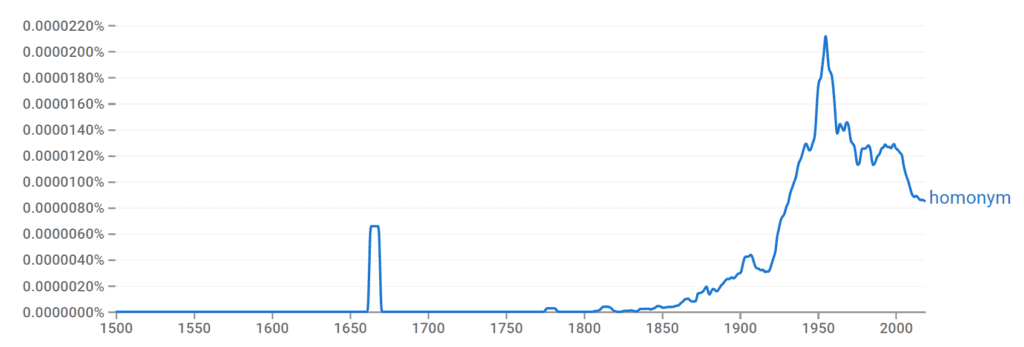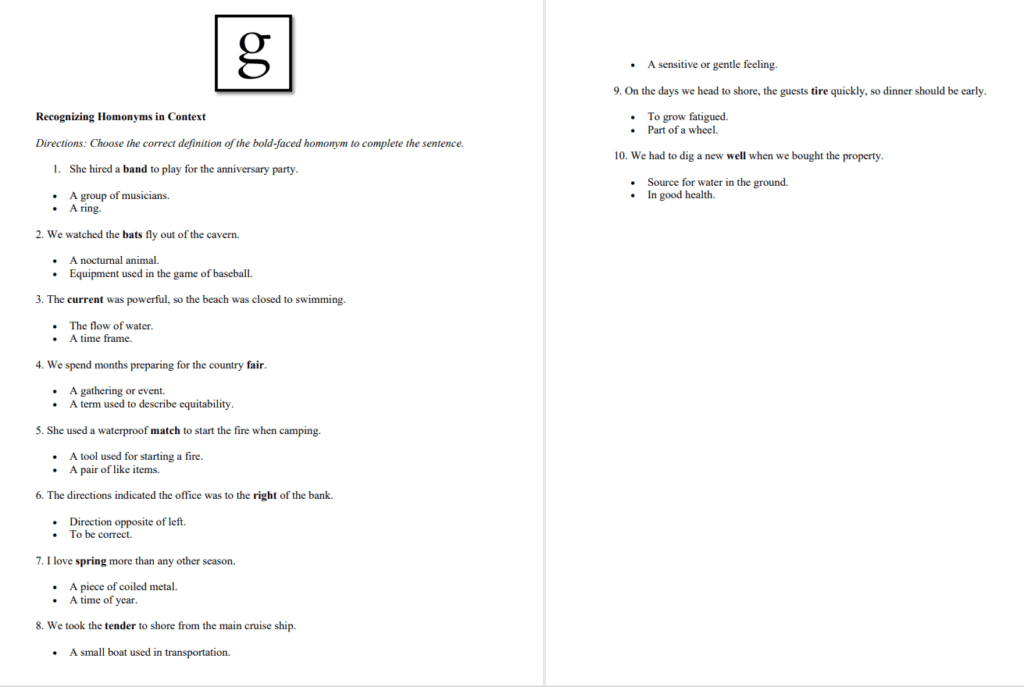The English language is riddled with confusing sentence structure and words that sound alike but have different meanings. This can be frustrating and confusing for an English language learner or even a young child.
Homonyms are one set of words that can be easily confused. Still, when you know these types of similarities exist, you can better determine word definitions for reading clarity and understanding.
Take a look at a homonym and how you can recognize its use in writing.
What is a Homonym?
A homonym (not to be confused with homophone) is one of a pair of words that are spelled and pronounced the same way but have different meanings and origins. For example, the word book can serve as a noun or a verb. A book is something you read. To book is to make reservations or place something on hold for later.
How Do You Determine Homonyms?
Since homonyms are spelled and pronounced the same, they can be very confusing to those new to the English language and children. To determine which meanings of homonyms are being used, the reader needs to depend upon context clues within the rest of the sentence.
History and Etymology of Homonym
The word homonym has ancient roots and comes from the Greek word homonymos, meaning “having the same name.” It has been used through the ages to signify or refer to two or more separate concepts that share the same name.
Homonyms have been used in the English Language since the mid-17th Century, and their use has stayed consistent for thousands of years.

Homonym vs. Homophone vs. Homograph: What’s the Difference?
There is quite a grammatical controversy surrounding the homonym, and depending on who you ask, you may find different answers and definitions of homonyms, homophones, and homographs. This is a frustrating reality, but if you follow the guideline below, you can keep the three defined and usable.
Homophone
A homophone is a set of words that have the same sound as one another but different meanings. They may have the exact spelling, but it is not required—for example, to, two, and too. To means to do something, two is a number, and too means also.
Homograph
A homograph is a set of words that has the exact spelling as one another but have a different pronunciation and a different meaning. For example, lead (pronounced LEED) and lead (pronounced as LED). Lead means to go in front of, while lead is a type of metal respectively.
Homonym
In the strictest sense, a homonym must be spelled and pronounced the same but have a different meaning. Therefore it is a combination of both a homonym and homograph.
Some homophones are also homonyms, but homographs are not homonyms since they are pronounced differently.
Examples of Homonyms With Sentences
The following list of examples highlights a small selection of the most common homonyms. There are many more word pairs than provided here, but these examples show how a word that looks and sounds the same can be used in two very different ways.
Address
Example #1:
I had the box sent to my home address.
Example #2:
She needs to address the behavior of her crew.
Arn
Example #1:
She cuddled the puppy in her arms.
Example #2:
The Second Amendment protects the right to bear arms.
Bear
Example #1:
We had to use bear-proof garbage cans in the park.
Example #2:
She was unable to bear the pain of the separation.
Bank
Example #1:
The banks of the river were full of native vegetation.
Example #2:
She deposited her check in the bank to save for the future.
Can
Example #1:
She threw the empty food cans in the garbage.
Example #2:
There is no way I can be prepared for tomorrow’s dinner on such short notice.
Date
Example #1:
Our first date together was very romantic.
Example #2:
Make sure to set the correct date on the calendar for the
Duck
Example #1:
The fly was annoying and kept landing on the food.
Example #2:
We are going to fly from Dallas to Orlando for vacation.
Letter
Example #1:
She wrote letters to him while he was away at camp.
Example #2:
Kindergartners learn the letters of the alphabet to prepare them for spelling.
Match
Example #1:
She struck the match to start the fire.
Example #2:
It was easy to match the socks since they were all different colors.
Nail
Example #1:
We used special wood nails to build the bench.
Example #2:
She gets her nails shaped and painted every two weeks.
Park
Example #1:
I had to park my car in a special spot in the apartments.
Example #2:
We take the dog to the park once a week to play frisbee.
Rose
Example #1:
She loved growing a variety of roses in her garden.
Example #2:
She rose to the occasion and took control of the new position.
Spring
Example #1:
My favorite season is spring.
Example #2:
The truck springs need to be able to handle the weight of the trailer load.
Watch
Example #1:
I like to watch my television show while I work out each night.
Example #2:
I always wear a watch on my left wrist to remind me when to take medication.
Let’s Review
A homonym is a pair of words spelled the same and sound the same but have different meanings. They are different from homophones and homographs, but some homophones can be homonyms also. To recognize a homonym, you need to pay attention to context clues within the sentence it is found in.

